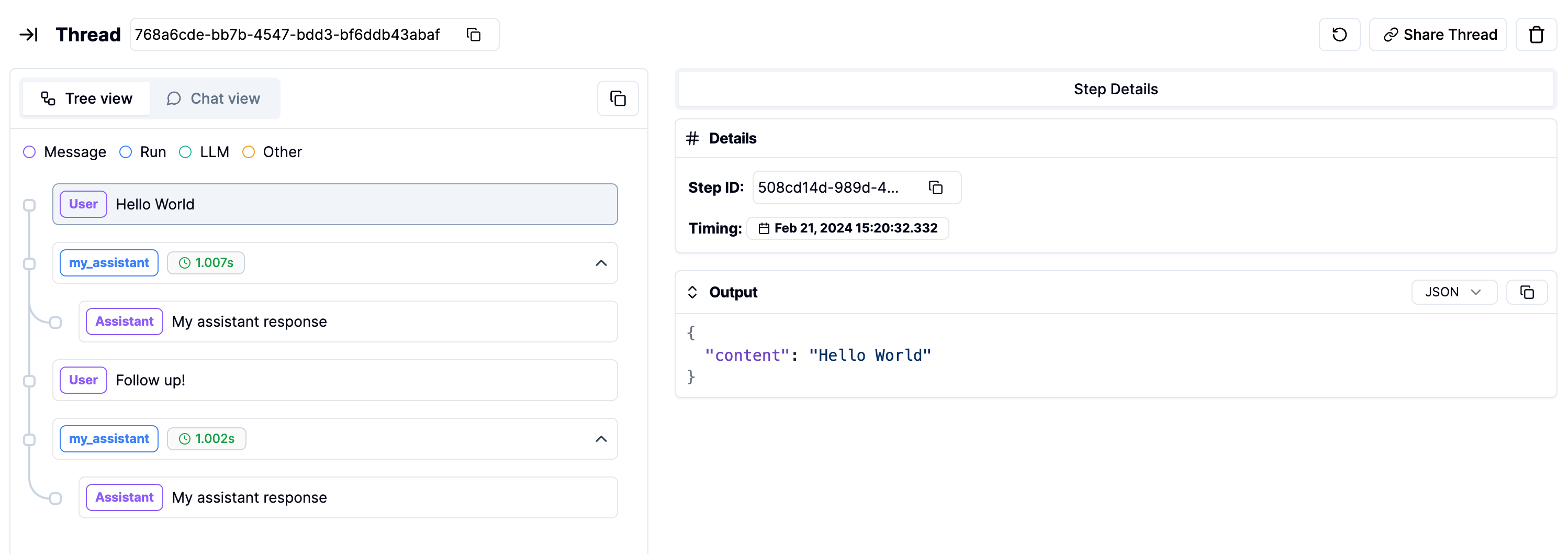Log a Thread
Visualize the Thread on Literal
Navigate to theThreads page on the platform to see the thread you just created.

Output on the platform
Tags
You can add tags to a Thread, Step or Generation. Similar to Github labels, you can use tags to filter data both from the Literal UI and the clients. Tags are shared between units (Threads, Steps and Generations). To add a tag to a Thread or Generation, open the specific item and add the tag on the top of the window. Here, you can also add new tags. Adding tags to Steps is possible in the Step itself.
Add new Tag
update_thread() (Python) or upsertThread() (TypeScript), you replace all previous assigned tags to this Thread.

Filter by Tag

